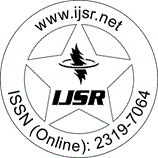Downloads: 1
India | Construction Management | Volume 14 Issue 11, November 2025 | Pages: 820 - 833
Quantification of Siltation / Sedimentation and Soil Erosion Values with the Help of Satellite Imagery: A Case Study of Harike Wetland, Punjab
Abstract: According to globally estimates, over 50% of the world?s wetlands may have been altered or lost in the last 50 years. Consequently, wetland conservation is a necessity and it requires an overview on their distribution and status. Harike, one of the largest wetlands of India, was declared a Reserve in 1987 by the Ministry of Environment and Forests, Government of India. Harike came into existence in 1952 due to the formation of a barrage at the confluence of river Sutlej and Beas at Hari-ke-Pattan. With the barrage comes the issue of sedimentation, siltation and soil erosion of the ponding and the nearby areas. To know about the cascading effect on the health of the wetland, the issue needs to be addressed and thus there is a requirement of data and imagery and support of Geographic Information System (GIS). In addition to the river flow and cross-sectional data, satellite-based data were obtained from United States Geological Survey (USGS) sites including with high-resolution satellite imageries, of EO-1, Landsat 7, and LISS-3 datasets. A digital elevation model (DEM) was created by integrating ASTER imagery, bathymetric survey data, and detailed river survey information. Siltation and soil erosion has reduced the pond area from 4100 ha. to 2800 ha. The storage capacity of this lake has considerably reduced from 8381 ha meter in 1952 to 1820 ha meter in 1990. Normalized Difference Water Index (NDWI) and the surveyed data were used to calculate the present grievous state of silt deposit at Harike. Moreover, the erosion prone area is identified using GIS and USLE model. The soil hazard map helps us to suggest the remedial measure and land use planning. Average benefit-cost ratio of 1.6 suggests that desilting operations are not only economically viable but also have additional benefits like environmental protection, increased soil microbial bio-diversity, improved soil quality and increased water storage.
Keywords: Wetland, Sedimentation, Siltation, Geographic Information System, bathymetry, Storage Capacity, Soil Hazard Map, NDWI, USLE model, NDWI, Imagery
How to Cite?: Dhiren Kumar Verma, Pranjali Kulkarni, "Quantification of Siltation / Sedimentation and Soil Erosion Values with the Help of Satellite Imagery: A Case Study of Harike Wetland, Punjab", Volume 14 Issue 11, November 2025, International Journal of Science and Research (IJSR), Pages: 820-833, https://www.ijsr.net/getabstract.php?paperid=SR251110115033, DOI: https://dx.doi.org/10.21275/SR251110115033
